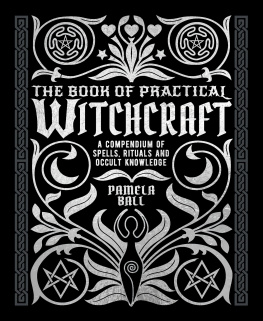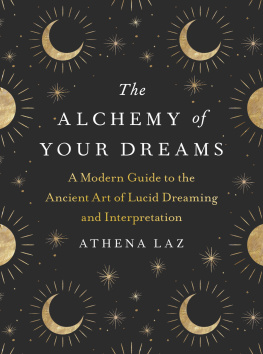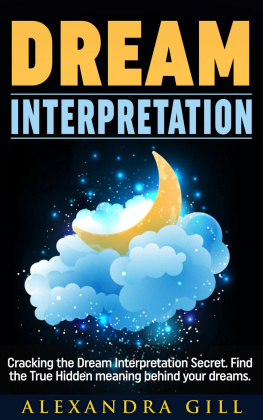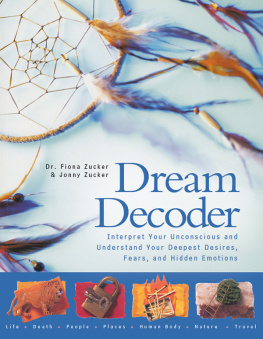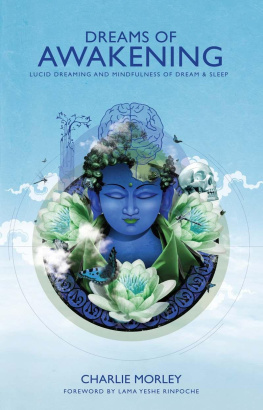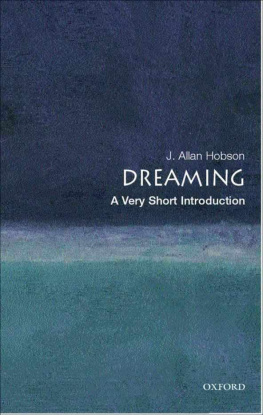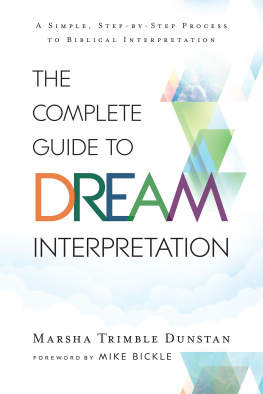Pamela Ball - The Complete Book of Dreams: A Practical Guide to Interpretation and Creative Dreaming
Here you can read online Pamela Ball - The Complete Book of Dreams: A Practical Guide to Interpretation and Creative Dreaming full text of the book (entire story) in english for free. Download pdf and epub, get meaning, cover and reviews about this ebook. City: London, year: 2017, publisher: Arcturus Publishing Limited, genre: Religion. Description of the work, (preface) as well as reviews are available. Best literature library LitArk.com created for fans of good reading and offers a wide selection of genres:
Romance novel
Science fiction
Adventure
Detective
Science
History
Home and family
Prose
Art
Politics
Computer
Non-fiction
Religion
Business
Children
Humor
Choose a favorite category and find really read worthwhile books. Enjoy immersion in the world of imagination, feel the emotions of the characters or learn something new for yourself, make an fascinating discovery.

- Book:The Complete Book of Dreams: A Practical Guide to Interpretation and Creative Dreaming
- Author:
- Publisher:Arcturus Publishing Limited
- Genre:
- Year:2017
- City:London
- Rating:3 / 5
- Favourites:Add to favourites
- Your mark:
- 60
- 1
- 2
- 3
- 4
- 5
The Complete Book of Dreams: A Practical Guide to Interpretation and Creative Dreaming: summary, description and annotation
We offer to read an annotation, description, summary or preface (depends on what the author of the book "The Complete Book of Dreams: A Practical Guide to Interpretation and Creative Dreaming" wrote himself). If you haven't found the necessary information about the book — write in the comments, we will try to find it.
Pamela Ball: author's other books
Who wrote The Complete Book of Dreams: A Practical Guide to Interpretation and Creative Dreaming? Find out the surname, the name of the author of the book and a list of all author's works by series.
The Complete Book of Dreams: A Practical Guide to Interpretation and Creative Dreaming — read online for free the complete book (whole text) full work
Below is the text of the book, divided by pages. System saving the place of the last page read, allows you to conveniently read the book "The Complete Book of Dreams: A Practical Guide to Interpretation and Creative Dreaming" online for free, without having to search again every time where you left off. Put a bookmark, and you can go to the page where you finished reading at any time.
Font size:
Interval:
Bookmark:
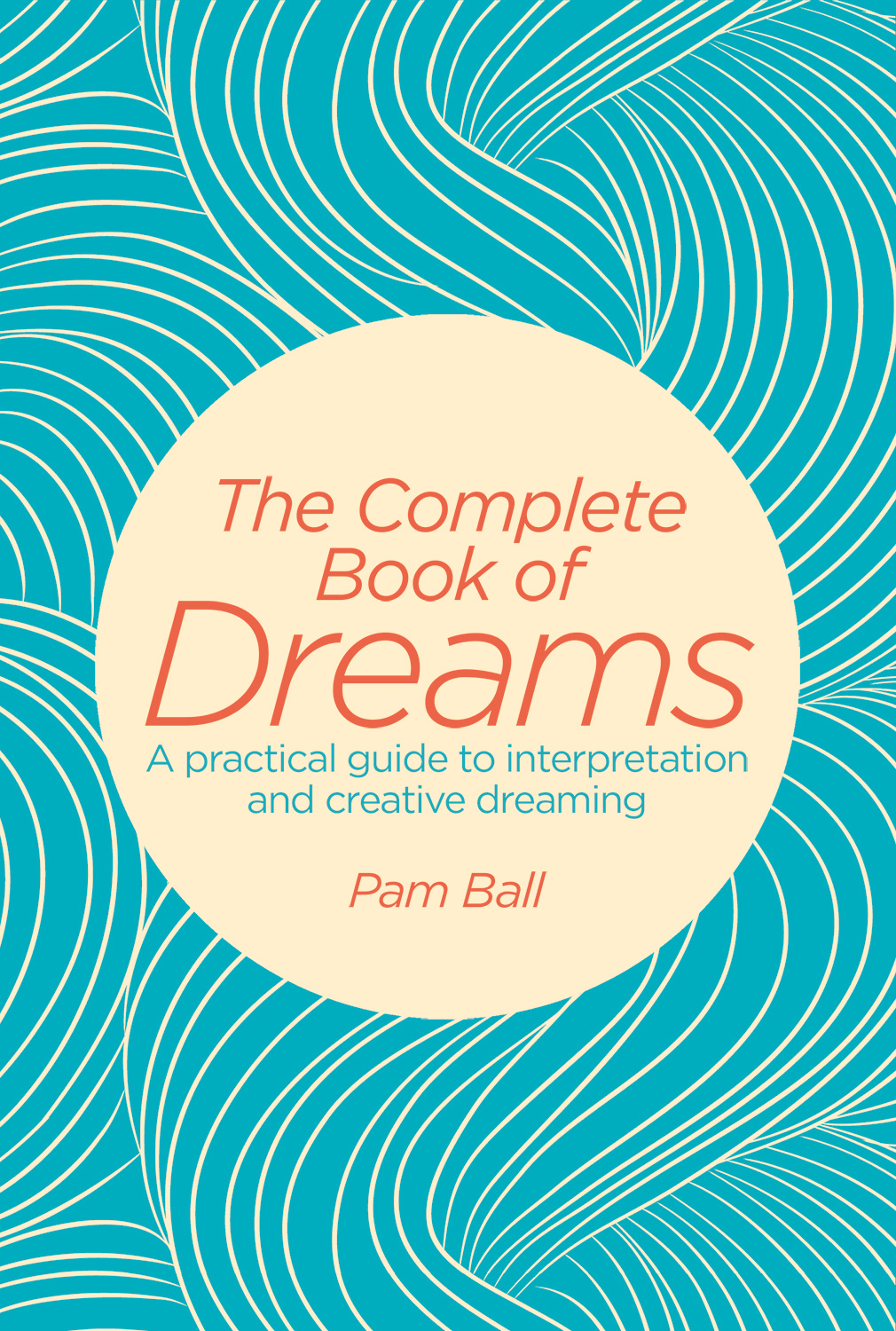
The Complete Book of
Dreams
A practical guide to interpretation and creative dreaming
Pam Ball
With acknowledgements and many, many thanks to my daughter Fiona without whom the book would not have been written, and to James Eden who offered support and a shoulder many, many times.
Thanks also to my family for putting up with my bad temper.
Pamela Ball
Introduction
The Penguin Dictionary of Psychology defines a dream in the following way:
A train of hallucinatory experiences with a certain degree of coherence, but often confused and bizarre, taking place in the condition of sleep and similar conditions.
Sleeping and Dreaming
Dreams are said to be the minds way of making sense of the various types of input with which it has had to cope. It has certainly been proved that the human being needs sleep in order to function successfully. Indeed sleep deprivation has a profound effect on efficiency and ability, and the function of dreams seems to be to balance the psychological and physiological activity within us. Mental and physical breakdown occurs very quickly without the relief of the dreaming process.
During waking hours the focus of our activity is generally geared towards the external and conscious. We are continually taking in information which must be either used immediately or stored until we can categorise it and fit it into some kind of pattern. We have the ability to read our fellow humans and situations. We are capable of assessing what is going on, making decisions and producing realisations and insights in the light of fresh information. Both the information and the insights are stored for later use, and can appear in dreams in an apparently random fashion.
There are those people who do not believe that dreams have any particular function in our lives other than being some kind of repository for information received. It has been suggested that dreams are a kind of white noise or background hum similar to that which emanates from any piece of electrical equipment.
On some levels this may well be true. They are a sort of self-cleaning, self-clearing process which makes room each night for the next days information. The question then arises, however, as to where the cleared material goes. It is a little like the housewife who spring-cleans, throws some of her rubbish away and stores the rest in the attic. What is left is then put to good use in the home. In the case of dreams, the rubbish, or what is not perceived as being needed is returned to the general tip or the collective unconscious. The material which may be useful in the future is then put away to be drawn on at random, and the remainder is left available for easy access.
Another way of looking at this process is to think of the mind as being a huge computer. In the waking state we are continually feeding in information, which is not filed in any particularly efficient way. Dreams perform two functions. One is the correct sorting and filing of information. The second is the presentation of information necessary for the dreamer to function successfully within the world in which he lives. As this internal computer becomes more powerful it needs to spend less time and effort sorting the incoming information, and more time searching for relevant information to enable it and its manager to function more effectively.
Dreams tap into this information database of memory, experience, perception and cultural belief, and form new ideas and concepts. They also present us with a way of solving problems which may seem impossible on a conscious level. When the limitations that the conscious mind places on the thought processes are removed, the mind is free to roam wherever it pleases. Free from inhibition, it will create scenarios and situations which defy explanation by the logical side of the personality. In looking for explanations we have to become more creative and open in the pursuit of knowledge. We can thereby tap into not only our own storehouse of images, but also into an even more subtle level of information available to everyone. This is the level that Jung labelled the collective unconscious.
The term unconscious is taken to delineate many functions and aspects of Self. It is that aspect of our being that scans our life experience, knowledge of which is retained in a level of memory to which we seldom have access. Information processing then becomes the development of a concept of reality in the understanding of what is probable and what would be severely out of the ordinary. Much of that which we call the unconscious forms a set of basic physiological and psychological functions our way of surviving. It is also a collection of inherited norms of conduct, beliefs and ideals.
As the collective unconscious becomes more accessible to us, it becomes obvious that there are certain patterns which continually emerge. These basic patterns often have been adjusted to fit the dreamers experience and sometimes need to be readjusted so that they can be made to fit better. Many dreams take place which enable us to have access to the basic patterns and many more to enable us to make the very subtle adjustments necessary.
The Exploration of Dreams
The more we explore this information database, the more subtle the explanations become, but oddly enough the simpler, easier and more pertinent we will find them. Thus, dreams will often have to be interpreted from more than one perspective in order to be fully understood. Because the human being is naturally holistic (that is, a whole person), dream interpretation cannot be an exact science and must take into account the dreamers understanding of himself. He may not be looking for psychological or spiritual interpretation, but simply an easy explanation of the dream. The aim is to recognise that:
We are attempting to achieve a particular goal or target, or actively pursuing an objective which may be, as yet unattainable. We are able to take account of all information available in order to achieve success.
We need to focus directly on emotions such as anger, jealousy, fear and pain.
We directly use aspects of sexuality and spirituality.
This book attempts to address that aim by giving the reader choices. The first interpretation shown is the more conventional one. It maybe that such a simple explanation of one or more of the dream images is ample for the dreamers needs. The second has a slightly more psychological slant, and often goes more fully into the likely significance for the dreamer, sometimes highlighting a particular course of action which may be appropriate. The third is a simple, short explanation of the accepted spiritual meaning, which gives the dreamer the opportunity to work interpretations through more fully using his own techniques. He may choose to use meditation or guided imagery, since these share much of the symbolism of dream imagery.
By assessing which of the interpretations is the most likely or perhaps if more than one is applicable the dreamer is able fully to understand the emotional content, the symbolism, the process and the reason for each particular dream.
If we so wish, we can record our dreams and build up a library of our own. We can monitor our own progress as we learn more and more about ourselves and the private world from which we create. The more accessible that world becomes, the more control we have over external circumstances. As we gain more control on a conscious level, the richer our life becomes. We are more able to control our own destiny, and to use the energy which becomes available to us to create a sustainable future.
The Language of Dreams
It has been suggested that dream interpretation is like learning a new language; this is very true except that the language is actually already known to us and it is simply a matter of re-learning it. The baby sees before it speaks, and interprets what it sees on a very simplistic level. To all intents and purposes it has no reason to believe anything other than that it is the centre of its own universe. A jumble of impressions gradually gains meaning and order, and a meaningless medley of sound achieves some kind of significance. The feelings associated with the impressions and the sounds become recognisable. If what is occurring is acceptable, the process of sorting becomes automatic. As the baby becomes better able to receive and quantify information, the sense of wonder becomes less, and the process of discovery also becomes more automatic. Re-learning dream language is simply remembering the process of sorting and the recognition of the symbolism.
Font size:
Interval:
Bookmark:
Similar books «The Complete Book of Dreams: A Practical Guide to Interpretation and Creative Dreaming»
Look at similar books to The Complete Book of Dreams: A Practical Guide to Interpretation and Creative Dreaming. We have selected literature similar in name and meaning in the hope of providing readers with more options to find new, interesting, not yet read works.
Discussion, reviews of the book The Complete Book of Dreams: A Practical Guide to Interpretation and Creative Dreaming and just readers' own opinions. Leave your comments, write what you think about the work, its meaning or the main characters. Specify what exactly you liked and what you didn't like, and why you think so.


